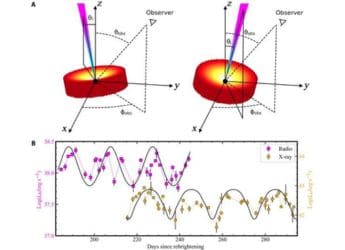- Home
- Science
- Science News
- NASA Is Testing Robotics for Bringing First Rock Samples From Mars
NASA Is Testing Robotics for Bringing First Rock Samples From Mars
NASA's mission to bring back samples from Mars is likely to be carried out sometime in the 2030s.

Photo Credit: NASA/ JPL-Caltech
NASA dropped this prototype to learn how a future Sample Return Lander could safely touch down on Mars
US space agency NASA is now carrying out tests on the crucial hardware that will bring rock and sediment samples from Mars to Earth for closer study. NASA is already collecting those samples using its Perseverance rover and taking images with a tiny helicopter named Ingenuity. Both these machines were launched on the Red Planet aboard the Atlas V rocket on July 30, 2020. They landed on a lake bed called the Jezero Crater on Mars in February this year to find signs of microbial life.
Perseverance's sampling system is one of the most complex mechanisms ever sent to space. The robot uses a drill and a hollow coring bit placed at the end of its 2-meter-long robotic arm to extract samples to help scientists better understand the Martian geology and climate.
In an update, NASA said it has started testing its “most sophisticated endeavour” to bring rock and sediment samples from Mars. Out of Perseverance's 43 sample tubes, four have been filled with rock cores and one with Martian atmosphere. The mission to bring back these samples is likely to be carried out sometime in the 2030s in collaboration with the European Space Agency (ESA).
ESA is developing a rover for the effort, which would transfer samples to a lander that would use a robotic arm to pack the samples into a small rocket, called a Mars Ascent Vehicle. To develop the systems that would help bring back the samples, NASA engineers are drawing from their long experience of Mars exploration.
One of the challenges they face is making launch from the Martian surface possible. The major challenge is gravity, Mars' gravity is one-third that of Earth's. This means that the weight of the rocket along with the exhaust could cause the lander to slip or tilt.
So NASA engineers have planned a system, known as Vertically Ejected Controlled Tip-off Release (VECTOR), that should be able to toss the rocket into the air at a rate of 5 metres per second.
Get your daily dose of tech news, reviews, and insights, in under 80 characters on Gadgets 360 Turbo. Connect with fellow tech lovers on our Forum. Follow us on X, Facebook, WhatsApp, Threads and Google News for instant updates. Catch all the action on our YouTube channel.
Related Stories
- Samsung Galaxy Unpacked 2025
- ChatGPT
- Redmi Note 14 Pro+
- iPhone 16
- Apple Vision Pro
- Oneplus 12
- OnePlus Nord CE 3 Lite 5G
- iPhone 13
- Xiaomi 14 Pro
- Oppo Find N3
- Tecno Spark Go (2023)
- Realme V30
- Best Phones Under 25000
- Samsung Galaxy S24 Series
- Cryptocurrency
- iQoo 12
- Samsung Galaxy S24 Ultra
- Giottus
- Samsung Galaxy Z Flip 5
- Apple 'Scary Fast'
- Housefull 5
- GoPro Hero 12 Black Review
- Invincible Season 2
- JioGlass
- HD Ready TV
- Laptop Under 50000
- Smartwatch Under 10000
- Latest Mobile Phones
- Compare Phones
- Redmi Note 15 5G
- Redmi Note 15 Pro 5G
- Redmi Note 15 Pro+ 5G
- Lava Play Max
- Poco C85 5G
- Honor Magic 8 Lite
- Jolla Phone
- Realme P4x 5G
- Asus ProArt P16
- MacBook Pro 14-inch (M5, 2025)
- OnePlus Pad Go 2
- Poco Pad M1
- Just Corseca Skywatch Pro
- Honor Watch X5
- Acerpure Nitro Z Series 100-inch QLED TV
- Samsung 43 Inch LED Ultra HD (4K) Smart TV (UA43UE81AFULXL)
- Asus ROG Ally
- Nintendo Switch Lite
- Haier 1.6 Ton 5 Star Inverter Split AC (HSU19G-MZAID5BN-INV)
- Haier 1.6 Ton 5 Star Inverter Split AC (HSU19G-MZAIM5BN-INV)

















